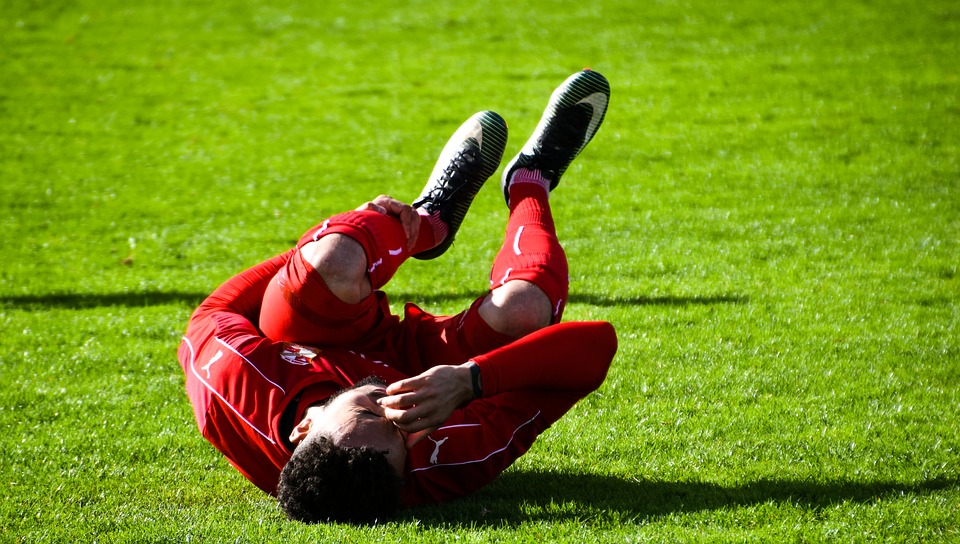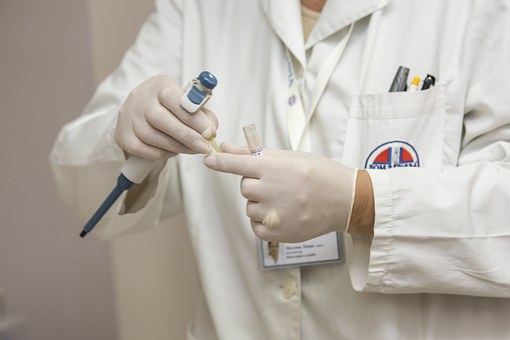While playing sports is exciting and unpredictable, a few things remain a guarantee: there will be winners, there will be losers, and there will be injuries. That is the sad, inescapable reality of playing sports. Yet, the risk of injury should not discourage you from staying passionate about the sports you love. There are various ways you can minimise—take note that the term is minimise, not eliminate—your risk of injury. Here are 8 of them:
1. Do strength training. Strength training builds muscle strength and strengthens tendons, ligaments, and bones. Strong muscles and tendons, in turn, help keep the body properly aligned and protect the bones and joints when they are subjected to high-stress, high-torque movements, like hard turns or sudden starts and stops. Strength training also enhances flexibility, as well as the ligaments’ shock absorbing capabilities. These physical enhancements decrease your vulnerability to impact injuries like fractures or strains. Four Four Two state that core strengthening is also vital for injury prevention as reinforcing your core enhances your balance and stability, allowing you to move much more efficiently.
2. Get your techniques right. The saying “do things right the first time, every time” is applicable in all sorts of ways in sport. Getting your technique right will not only help you excel but also minimise the risk of injury. Proper execution, as all elite athletes know, is crucial to avoiding injuries because it means that every movement is performed optimally with less stress incorrectly put on the bones, joints, and muscles. A forceful kick in football, for instance, can lead to hip, quad, hamstring, or knee injuries if incorrectly done. Improper form when running can cause foot and knee injuries.
3. Warm up!
Sports Medicine Information explain that the warm-up is the most important exercise one can do to reduce injury risk. A sufficient warm-up session should last at least 5–10 minutes, and involve gentle stretching and light exercises that will prepare the muscles for the strenuous activities that are to follow. Through warming up, you increase blood flow to the muscles and enhance their flexibility, which then reduces the risk of muscle pulls and strains. Stretching, meanwhile, “lengthens” the muscles and tendons, and this further helps in preventing injury.
4. Don’t over-reach. In the heat of competition, athletes at every level have the tendency of over-exerting themselves. This so-called hero tendency is counterproductive, and is an invitation to get injured. Over-exerting yourself often means going past your physical limits, and once this happens, you are pretty much an injury waiting to happen. This is because your body is likely not ready to meet the demands of such actions or movements. So, do play hard, but stay within your physical limits.
5. Be careful!. Not that athletes are not careful, but this advice is nonetheless worth repeating. Being careful in the context of sports and injury prevention simply means not putting yourself in harm’s way. It’s okay to be aggressive, but avoid being reckless, as it is this recklessness that will put you in situations where the chance of injury is greater.
6. Use protective equipment. Wearing pads, braces, and supports for the knees, elbows, and ankles do not totally prevent injuries, but they do add a layer of protection that can help in minimising injuries. If you are recovering from injury, or have a recurring injury, wearing protective equipment will support the area and give you the confidence to perform without worrying about doing further damage. This is the reason why most athletes coming off knee injuries often wear some kind of knee support or brace, especially in their first games back.
7. Stay hydrated. Staying hydrated is extremely important in preventing injury. NHS Choices inform that the symptoms of dehydration include feeling thirsty, tired, and dizzy. Dehydration also affects the musculoskeletal system adversely, weakening it to the point that it can no longer function optimally. This results in impaired performance and increased risk of injury. Muscle strains are one of the most common injuries associated with dehydration. This is due to the lactate levels in the muscles increasing. Strained muscles can often lead to worst injuries such as muscle tears, which will put an athlete out for even longer.
8. Let yourself recover. Recovery is crucial because it is during this stage when the body repairs any damage inflicted to it by constant training and intense playing. When you don’t give yourself ample time to recover, the tendency is you will be playing with muscles, tendons, and ligaments that are less than 100%. This means that they will be weaker, and therefore more susceptible to injury.
Take note, though, that the 8 ways discussed here are not fool proof as it is virtually impossible to avoid injuries in sports. Sometimes, even the best and most careful athletes are felled by freak accidents. This was the case with Neymar who, according to Ladbrokes fractured his metatarsal. This injury, unfortunately, might see Neymar on the sidelines when the World Cup starts later this year. Years prior, David Beckham suffered the same injury, and while he was able to play through the pain barrier, he simply wasn’t the in-form Beckham that fans were used to seeing.
The cases of both Neymar and Beckham simply reinforce the point we made already at the beginning: that injuries are an unavoidable part of sport. But as we mentioned, too, that should not keep you from enjoying the games you love. Rather than let the fear of injury consume you, take the necessary precautions we have enumerated to compete as hard as you can and reduce the chances of injuring yourself. See: Importance of first aid In Schools
Author: Miss JenMae Cross
Exclusive for: Publichealth.com.ng
Public Health Nigeria an Interdisciplinary public health movement focused on health education, advancing fair public health policies, promoting fitness, healthy diets, responsible behavior, community health and general well-being.





